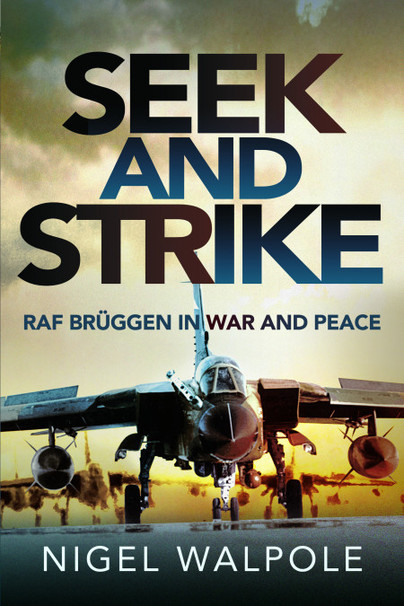Guest Post: Nigel Walpole – War in the Balkans
In that quiet corner of Germany on the Dutch border, the tranquil calm of Easter Sunday, 4 April 1999, was shattered by the roar of six RAF Tornados launching into the night. They were loaded with Paveway Laser Guided Bombs (LGBs) and Thermal Imaging Laser Designators (TIALDs), armed with Sidewinder Missiles and Mauser Cannon and equipped with a defensive suite of Boz chaff dispensers and Skyshadow Electronic Countermeasures (ECM) pods; they were bound for Serbian targets in Kosovo. This was Operation Engadine – and the risks were high.
The Rambouillet Accord having failed to bring peace to the Balkans, and with Serbian ‘ethnic-cleansing’ continuing, all leave at RAF Brüggen had been cancelled , the Station went to 24 hour manning and No 14 Squadron, commanded by Wg Cdr Tim Anderson, made ready for war.
The campaign was run in four day cycles. The first day was devoted to intelligence briefings and detailed planning for the sortie which was to follow on the next night, the final two days being spent in debriefings and personal administration. Some of the crews had been ‘blooded’ in the Gulf War, eight years before, but the majority were about to get their first baptism of war, and apprehension was palpable throughout the Station.
The outbound trips were challenges in themselves, sometimes flown in poor weather, with success dependent on several sometimes difficult air refuelling from VC10 or Tristar tankers, particularly when the heavily loaded Tornados were in and out of cloud and turbulent air. They then had to face the formidable Serbian Surface-to-Air Missiles (SAM) and Anti-Aircraft Artillery (AAA), and take on more fuel to complete the eight hour round trips.
They would not be on their own. Approaching hostile airspace they could expect support from Airborne Warning and Command and Control (AWACS) aircraft, US EA6B Prowler ECM aircraft, F16s for Suppressing Enemy Air Defences (SEAD) and fighter cover from US F15s.
Provided the TIALD designators could ‘see’ their targets, the LGBs were delivered from 20,000 ft, generally out of reach of most Serbian guns, but not the SAM, and most crews were engaged by AAA or SAM – or both – and had to drop their external fuel tanks to take effective evasion action. They spoke of surreal pin-points of light chasing them through the night, seemingly innocuous but of course potentially lethal.
Back at Brüggen the working day for most, crucially the Tornado groundcrews who worked 12 hours a day, 7 days a week, would begin with breakfast in the early evening, and continue throughout the night as they waited anxiously for the bomber and tanker crews to arrive back at dawn, to dinner and a few beers before taking to their beds. An uncharacteristic daytime quiet then descended on the Station, allowing the night time warriors some all-important sleep.
By 29 May, having flown 130 Engadine sorties direct from Germany, a number of Brüggen Tornados from Nos IX and 31 Squadrons deployed to Solenzara, a French base in Corsica, closer to their targets, to complete the campaign.
So ended Operation Engadine; Brüggen had done all that was asked of it, achieving a high success rate and contributing much to the uneasy peace which finally settled over the Balkans – and all their airmen had survived.

Read more in Nigel Walpole’s upcoming release, Seek and Strike which is available to preorder here.

